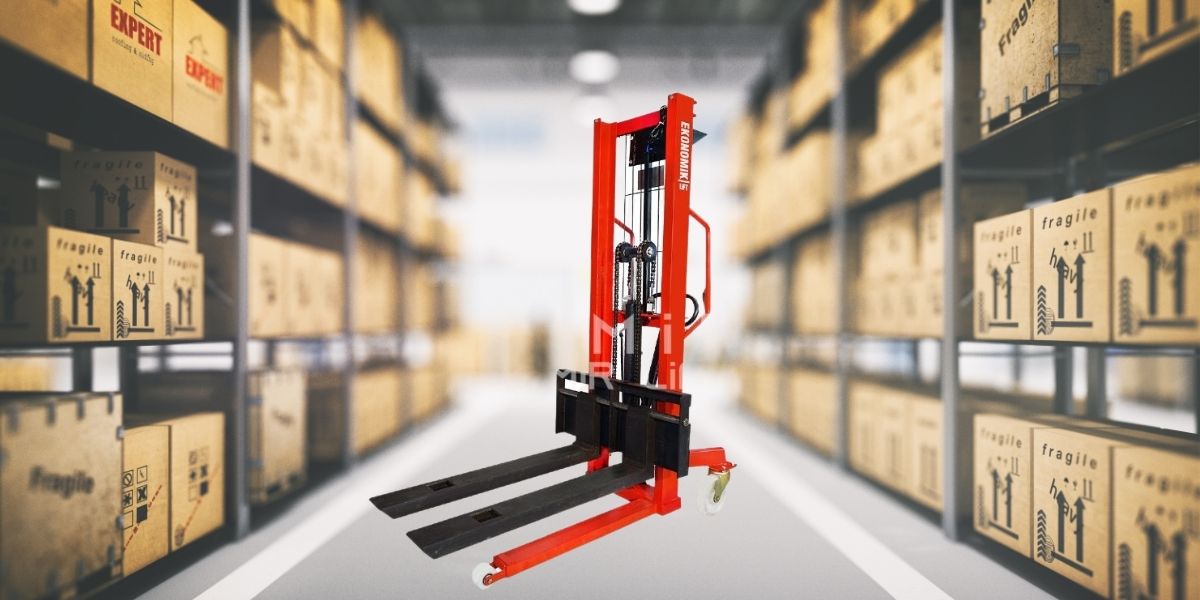
In today's industrial processes, lifting and carrying heavy loads have always played a significant role. Various machines and equipment have been developed to facilitate these challenging tasks. A manual stacker is an essential tool that enables the lifting, carrying, and stacking of loads. This machine assists workers in easily transporting heavy loads and safely stacking them at elevated positions, thereby saving power and time. In this article, we will discuss the operating principles, application areas, advantages, and disadvantages of a manual stacker.
A manual stacker features a simple yet effective mechanical design. It typically consists of a sturdy steel frame, wheels, and a lifting mechanism. The user manually maneuvers the machine and applies force to lift and transport the loads.
The lifting mechanism of the machine can be based on hydraulic or leverage principles. A manual stacker with a hydraulic mechanism performs lifting using a hydraulic pump. The user operates the pump to gradually elevate and then lower the load. A lever-operated machine, on the other hand, uses the leverage principle to lift and stack loads. The user accomplishes the lifting process by moving the lever.
Manual stackers are widely used in various industrial sectors such as storage, logistics, transportation, and manufacturing. They are also preferred for placing and retrieving products on shelves in retail stores and storage areas. Manual stackers prove to be valuable assistants in places where heavy loads are frequently lifted and moved. Additionally, these machines are suitable for working in tight and limited spaces.
Manual stackers simplify the process of lifting and transporting heavy loads. This allows workers to operate efficiently with less physical effort.
These machines are a more cost-effective option compared to more complex and automated machines. They are particularly ideal for small-scale businesses and low-budget projects.
The mechanical structure of manual stackers, containing fewer components and lacking complex motor systems, keeps maintenance and repair costs low.
Their compact size and wheels enable these machines to maneuver in narrow spaces and be used in various environments.
Manual stackers that operate without electricity or fuel consumption provide an eco-friendly solution that minimizes energy consumption.
Manual stackers have lower lifting capacities compared to automated or electric machines. As a result, they are not suitable for lifting heavy loads.
In some cases, applying manual force to lift and carry heavy loads can be challenging and cause fatigue among workers.
Manual stackers cannot achieve the speed and efficiency levels provided by automatic machines. Therefore, they can be time-consuming for large and demanding workloads.
When used without proper training or adherence to safety procedures, manual stackers can lead to accidents and injuries.
In conclusion, a manual stacker is a valuable tool for lifting and transporting heavy loads. Its simple design, cost-effectiveness, and environmentally friendly nature make it a preferred choice in many industrial fields. However, considering usage limitations and safety risks, it should be used correctly. The machine's capacity and proper usage play a crucial role in ensuring the safety of workers. For businesses aiming to carry out their operations efficiently and effectively, a manual stacker presents a reliable solution.